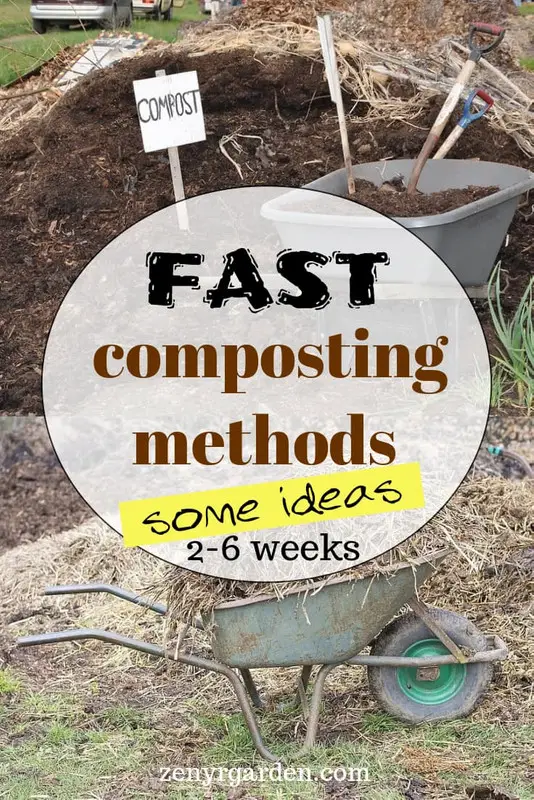Let's go through some composting methods, their different speeds and the pros and cons of each below:
Method #1: Black Soldier Flies (15 Days)
Black soldier flies, a non-pest type of insect (Hermetia illucens), are one of the fastest composters of organic waste that we know of to this day. They eat 5-10 times their weight and most voraciously when they're at the larvae stage.
This means, one pound/one kilo of BSF larvae can chew up 10+ lbs/kilos of food waste easily within a day. And all of this bio-conversion is done within about 2 weeks, the point at which the larvae stop eating and will be transitioning into another phase called pupae. This is one advantage of using BSF as composters.
Another benefit of the black soldier flies is that they can basically consume any organic materials–including the things we don't normally put in traditional compost piles or in our worm bins. Give them meats, fish, bones and they'll do perfectly fine with them. In the words of a BSF raiser:
Now there's a way to compost cat litter
BSF do okay with composted and even fresh manure. Any high-energy or high-protein stuff will be their favorites. They don't really like cardboard however.
Unlike other composting methods, BSF composting turns the waste right into the biomass of the BSF. So the grubs themselves are the end product which we can harvest and use to feed the chicks, the fish and so on.
One possible downside of BSF is that not everyone enjoy looking at these wiggly creatures. They move and dance flexibly with their bodies. Because basically they are worms. They do gross out a lot of gardeners and the ladies and that's a no-no in the house.
Also, as the BSF appetite is quite unique (decaying meats/fish), this translates to the foul smell. Despite this, there are ways that people have shared to keep the smell down. You can use EM (effective microorganism) or ferment the food waste before feeding them. It will help reduce the odor and keep the houseflies away.
So in summary, the pros and cons of BSF composting are:
Pros:
- Fast decomposing of foods: only 15 days
- The BSF eat meats/bones/manure/cooked foods/diary
Cons:
- The grubs may easily gross out some gardeners
- The possible foul smell
Method #2: Hay (4 Weeks)
We're not sure if using hay counts as a composting method or is it more of a mulching thing. But according to some, the breaking down process of hay has been a lot faster than expected.
If you're living on a homestead, spreading hay on your garden beds or soil may be a good solution to revitalize the soil. And it only takes about 1 month to break down.
If you have some chicken manure lying around, sprinkle them on the hay. There's something in the chicken poop that helps with the break-down process.
This hay composting method was shared by Ruth Stout. When asked how much hay to add, she answered:
More
Well, sweet and simple that is. This application can be seen in other parts of the world like in some natural farming methods in Japan. When they are done threshing their wheat or barley plants, they cover the soil with the straws, giving a part of the Earth back to the Earth, where it belongs.
Pros:
- No-work composting
- Relatively quick: 4 weeks
- Low cost
Cons:
- More suitable for farms or homesteads (unless you can get hay in the city)
Method #3: Bokashi (2-6 Weeks)
Bokashi composting is based on using good microbes (or EM effective microorganism) to help ferment the food waste. Or more simply, fermenting your compost.
Because of this, bokashi composting gives off little to no foul smell. It has this sour pickle-like smell that is tolerable. This is one of the reasons that makes bokashi a viable solution for indoor composting and for those living with near-by neighbors.
As fermenting is aka cold composting, the bokashi compost, when done, is nutrient-rich. As there is little heat generated during the breaking down process, the compost efficiently retains most of the nutrients it started with and few nutrients are transformed by any heat source.
Additionally, bokashi composting is fast. If you take out the compost after 2 weeks, you can bury it into a trench in the garden or directly into the ground.
Within about a month, it should break down quite nicely. When you return on week 6, most of the food pieces will have now been broken down with a nice earthy smell. You'll have some good soil to use in the garden.
>> Link YouTube:
How long before bokashi compost turns to soilThe downside of this method is perhaps if we don't learn how to make the microbe starter, then we may need to buy the store-bought solutions over and over again.
But fortunately, learning how to make your own EM is cheap and easy. Everyone can do it right at home or in their kitchen. We talk about how to make your own homemade EM here in this post.
>> Link Blog post: How to make EM1 effective microorganism
Pros:
- No foul smell
- Little loss of nutritional value
- Fast composting process: 2-6 weeks
Cons:
- Can't bury bokashi in frozen ground in the winter
- Beginner mistakes may cause it to create odor
You can check out other composting ways here . This post talks in more details about the bokashi method as a composting way without the worms:
Here is 'How to compost with black soldier fly' if you're interested:
Share or pin this post!


